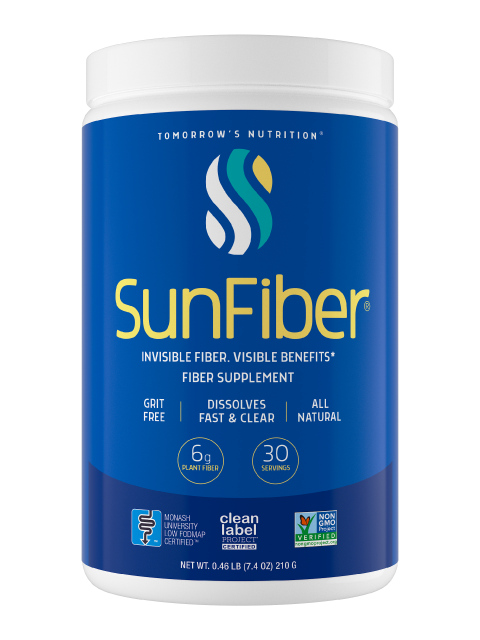Consuming the recommended amount of daily fiber can be challenging when you’re following a low FODMAP diet, especially during the initial six-week food elimination phase. That’s because many high fiber foods are also high FODMAP.
If you’re eliminating FODMAPs, you may already have troublesome gas and bloating. You don’t want to also trigger uncomfortable constipation! Dietary fiber does more than help to regulate bowel habits. It helps maintain healthy blood sugar and cholesterol levels, feed the gut’s “good” bacteria or probiotics, and provides satiety and weight management.
What’s the best way of reaching your optimal intake of 25 to 38 grams of fiber daily?
You can still follow a plant-based diet. In fact, you can even eat a relatively wide variety of fruits, vegetables and whole grains. But, at least initially, you will want to carefully monitor your portion sizes until you’ve identified your trigger foods.
As this Monash University chart indicates, you can get 3 grams of fiber from one cup of chopped fresh pineapple, and 4 grams from snacking on 10 fresh strawberries. A half cup of uncooked rolled oats for breakfast will also deliver 4 grams of fiber, while 3-½ cups of popcorn while watching your favorite TV show in the evening will give you a whopping 8 grams!
Using a fiber supplement during the elimination phase is also a good solution. But be selective. Some fiber supplements are high in FODMAPs. Fiber supplements containing inulin, GOS, wheat dextrin and IMOs, are all ingredients which should be avoided by those looking to reduce FODMAPs in their diet.
Today, there are fibers that help maintain a diverse gut microbiota, and don’t inadvertently create other digestive problems. Sunfiber was the first fiber certified Low FODMAP by Monash University. This means individuals can confidently consume Sunfiber to meet their fiber needs without experiencing undesirable side effects of high FODMAP fibers.
This free white paper, “Managing dietary fiber while following a Low FODMAP dietary program,” will help you address the fiber deficiency, without worsening of symptoms, during the elimination phase of the low FODMAP dietary program.



0 Comments